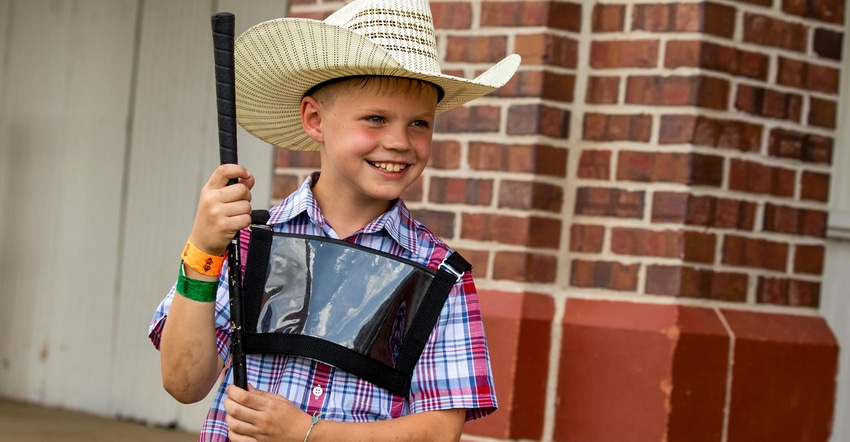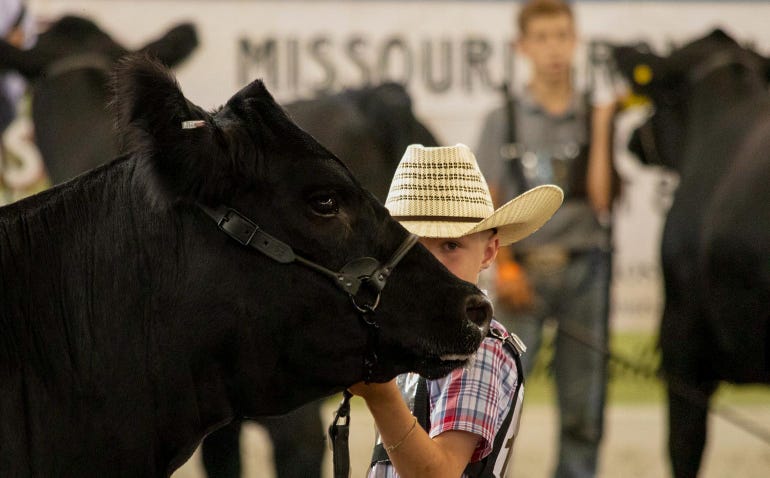July 27, 2020

The year is 1901, and the Missouri State Fair is little more than a few temporary buildings on a pasture that have been turned into fairgrounds in a few months’ time.
Like most agricultural fairs in the nation, the Missouri State Fair began as a harvest festival. The fair was scheduled for the second week in September, when farmers had a break between harvesting field crops and beginning their winter farming activities.
Although the fair was merely a portion of what it is today, and 1901 brought a drought, the excitement for the fair couldn’t be contained. A newspaper clipping from the Sedalia Democrat in 1901 reads, “The exhibition of livestock at the Missouri State Fair, to be held at Sedalia [from] Sept. 9-12, will be the finest aggregation of pure blood of all breeds ever to be seen in this state.”
When I read this, I can’t help but imagine fairgoers eagerly anticipating the first state fair.
Fast forward to the year 2020, and instead of a drought, the state is facing a global pandemic. When the Missouri State Fair announced it was pivoting to a youth livestock show and was going back to the basics, I imagined a fair like the one that took place in 1901. A fair to celebrate agriculture and champion our youth; a fair that is still anticipated and still valuable, but one that is zoning in on the most important aspects of Missouri agriculture.
Get to the heart of agriculture
It’s no doubt these past few months have been some of the strangest and trying times in recent history. During these months, many farmers have been getting back to the basics. During a drought, a flood or even a global pandemic, farmers still plant their fields, feed their livestock, milk their cows and provide safe, wholesome food for our families.
This endurance is the legacy they have set for agriculture’s youth. I’ve watched as 4-H and FFA members across the state, uncertain if their county fairs or state fair will even go on, still go out and walk their livestock, clean them and teach them to do well in a show ring. It’s an act of endurance, and it’s one that is desperately needed right now.
Fair offers look at ag’s future
The real-world classroom the Missouri State Fair provides for young exhibitors and agriculturalists is an enrichment they won’t receive anywhere else. Lessons in a show ring are lessons that aren’t easily replicated anywhere else. I’ve learned this by watching my own children show.
When I walk around the fair, I sometimes wonder if the young exhibitor who brought their prized beans in will one day work in our Grain and Warehousing division. When I see FFA members delivering their garden crops, I hope they will one day work in our Plant Industries division.

INTENSE COMPETITION: For youth such as Brigham Nelson of Platte County, the Missouri State Fair often is the pinnacle show for all their work during the year. This year, they once again can compete, but there will be fewer people in the stands as it is only a Youth Livestock Show event.

When I notice a young exhibitor inspecting their show steer, I reflect on how they could one day work in our Animal Health division. I know many of the leaders in our department had their start at the Missouri State Fair.
The Missouri State Fair is a whole lot of fun, but the most important thing the fair does is tell the story of agriculture. This is the most basic function of the Missouri State Fair, and it’s one that is the center of the fair this year. The young exhibitors who have quickly learned to be flexible and adaptable show me the promise in agriculture’s youth.
I can’t think of a better group to look to for hope and endurance than young exhibitors at the Missouri State Fair. This fair, although trimmed down, is still one eagerly anticipated. Like the exhibitors who show up year after year, the state fair is no stranger to hardship, but it always endures.
Chinn is the director of the Missouri Department of Agriculture and a hog producer from Clarence.
About the Author(s)
You May Also Like




